Just starting out with flying a drone? It’s an exhilarating experience, but getting the hang of the controls can feel a bit overwhelming at first. Don’t worry, with a little practice, maneuvering your drone will become second nature. Soon, you’ll be flying without even thinking about each stick movement, truly becoming one with your drone.
The key to getting there is consistent practice. When you’re a beginner, the golden rule is to use very gentle movements on the control sticks. This will translate to smooth, slight movements from your drone. As your confidence and skill grow, you can start experimenting with more decisive, sharper stick inputs.
(Note: For simplicity, this guide assumes the standard control setup where the left stick manages yaw and throttle, and the right stick controls roll and pitch. Keep in mind that some drone transmitters allow you to customize these settings to suit your personal preferences.)
Understanding the Four Core Drone Controls
There are four primary controls you need to master to fly a drone effectively. These are Roll, Pitch, Yaw, and Throttle. Each control corresponds to a specific movement, and understanding how they work is crucial for smooth and controlled flight.
Roll: Mastering Side-to-Side Movement
Roll is the control that moves your drone from side to side. It’s executed by pushing the right stick on your controller to the left or right. Think of it like actually rolling the drone in the air.
When you push the right stick to the left, the drone will roll to its left, causing it to move to your left (if the drone is facing away from you).
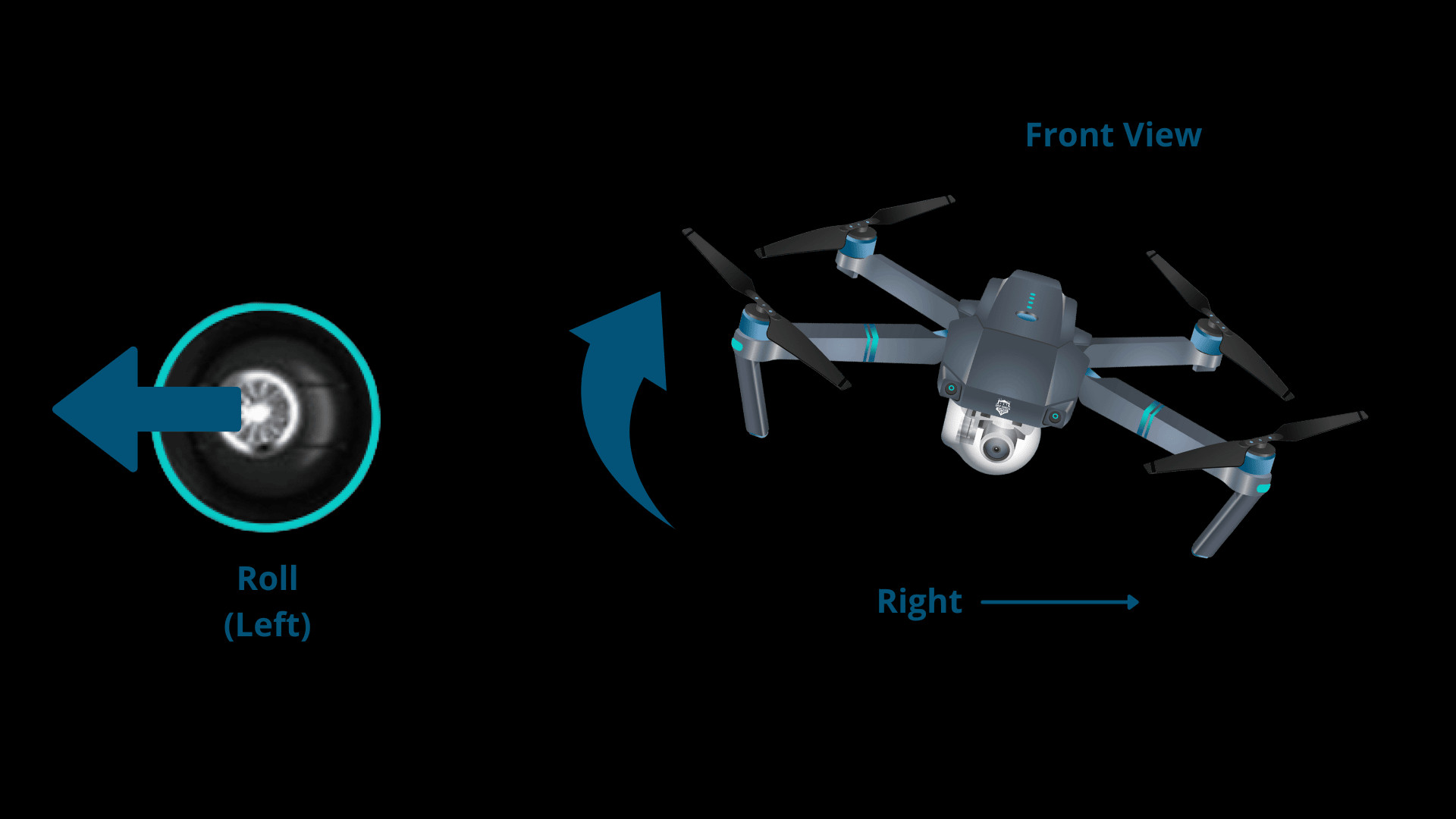 Front view left roll
Front view left roll
Conversely, pushing the right stick to the right will roll the drone to its right, making it move to your right (again, assuming the drone is facing away).
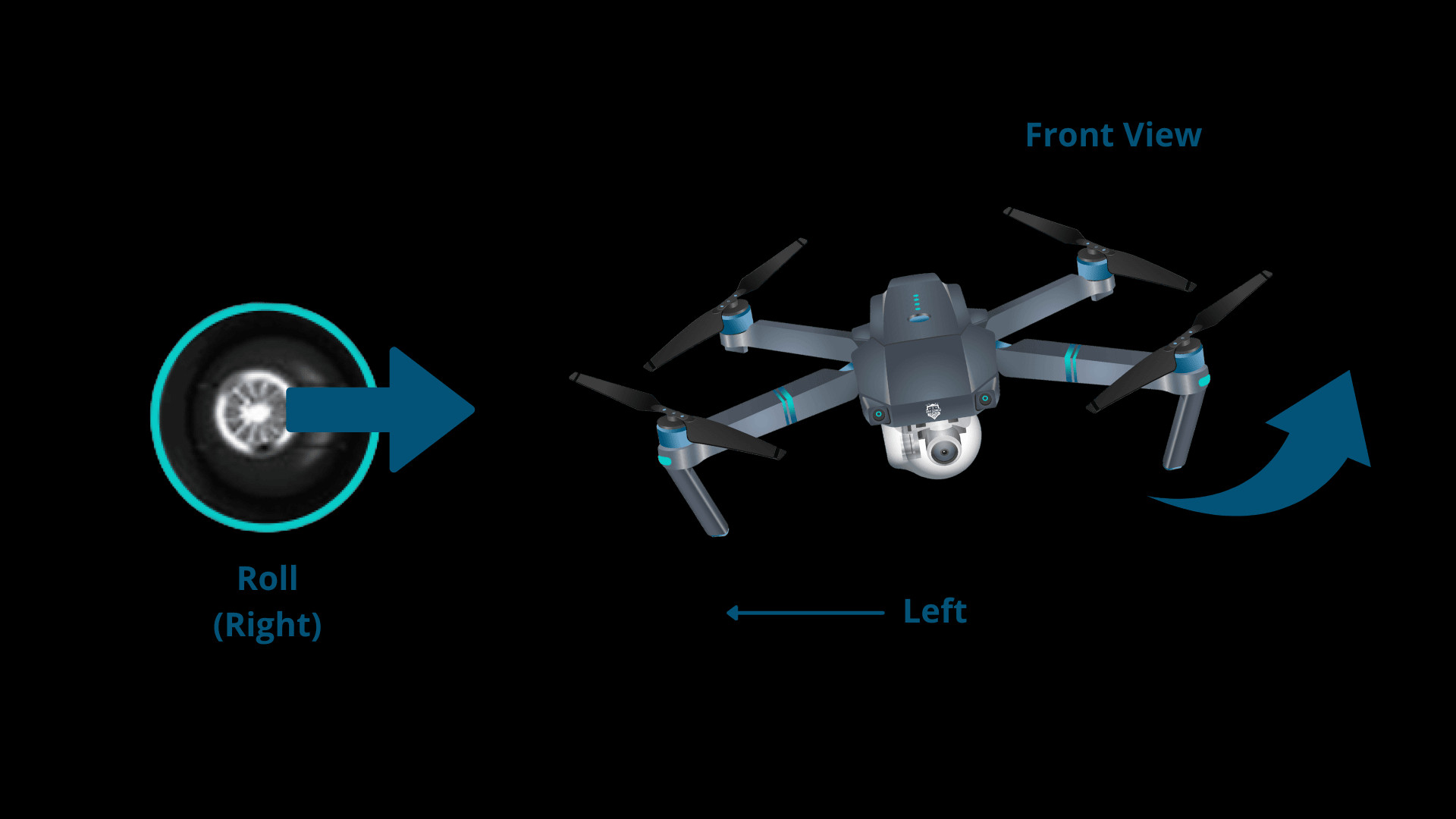 Front view right roll
Front view right roll
Pitch: Flying Forward and Backward
Pitch control is what allows your drone to fly forwards and backwards. It’s controlled by pushing the right stick forwards or backwards. This action tilts the drone, changing its direction of travel.
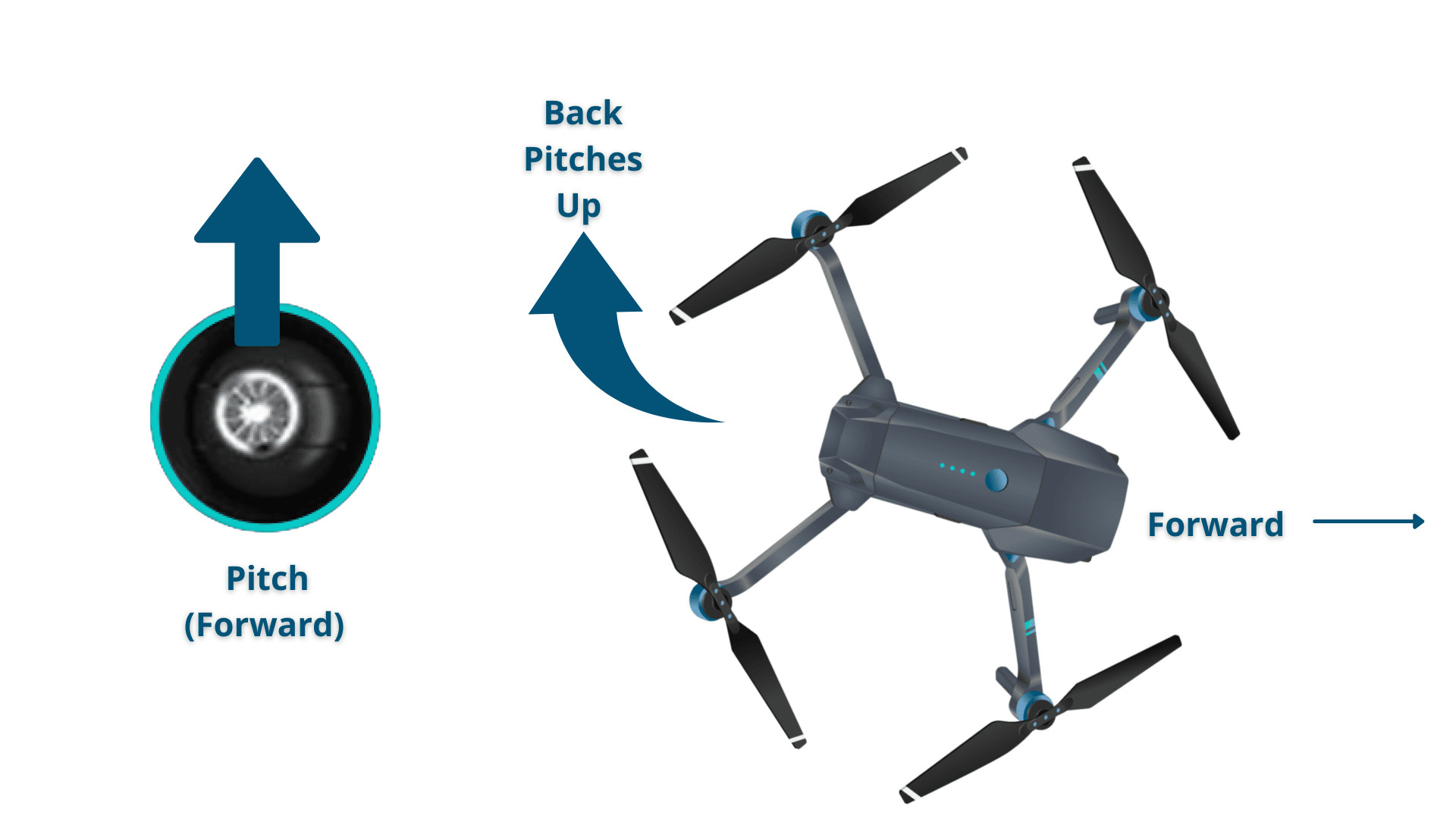 How to Fly Pitch Up
How to Fly Pitch Up
Pushing the right stick forward will pitch the nose of the drone down. This downward tilt causes the drone to move forward through the air.
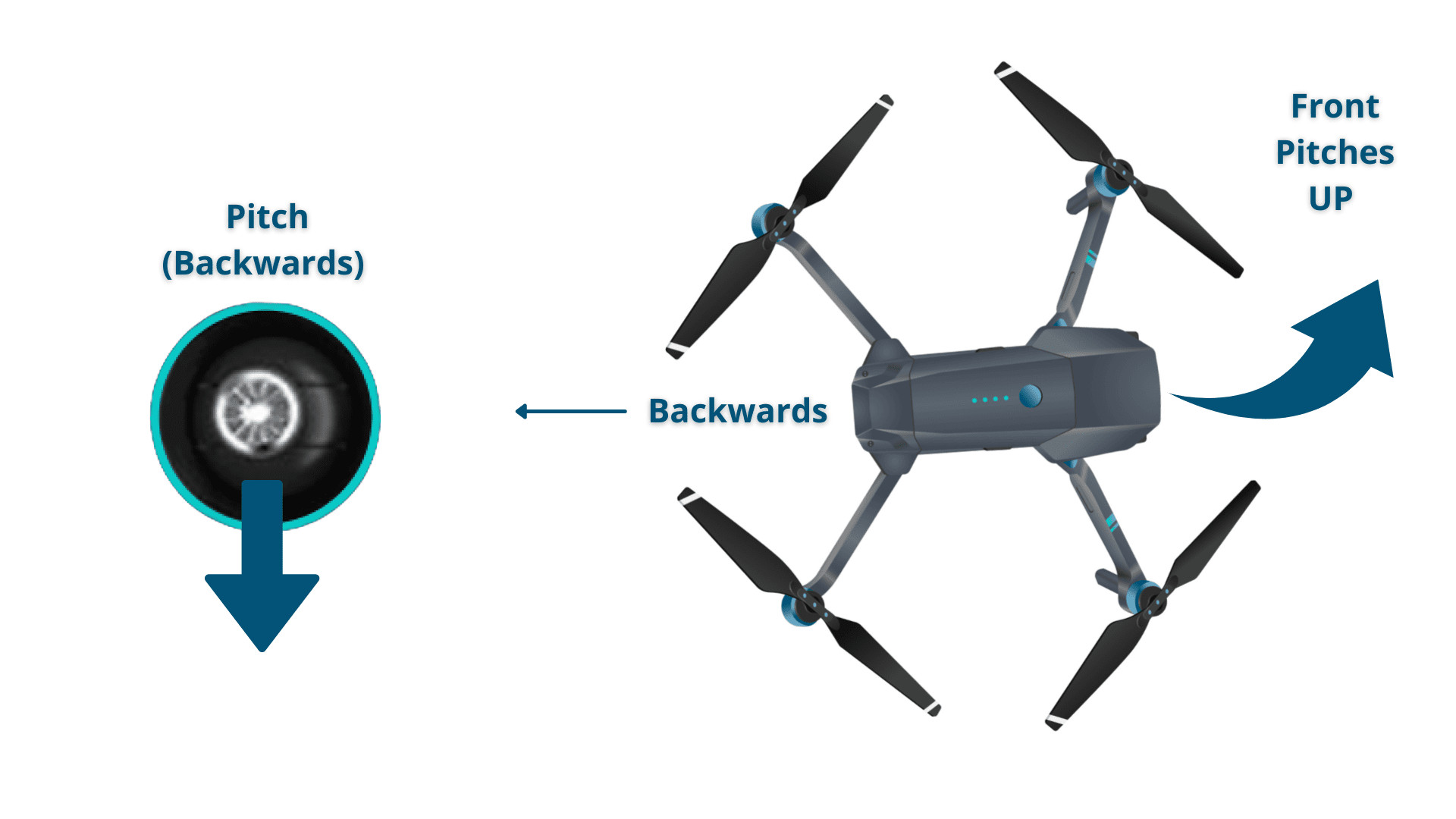 How to Fly Pitch Down
How to Fly Pitch Down
Pulling the right stick backwards will pitch the nose of the drone up. This upward tilt results in the drone moving backward.
Yaw: Rotating Your Drone
Yaw can be a little trickier to visualize at first, but it’s simply the rotation of your drone, either clockwise or counterclockwise, on its vertical axis. Yaw is controlled by pushing the left stick to the left or to the right.
Using yaw allows you to point the front of your drone in different directions without changing its flight path in a straight line. It’s crucial for changing orientation while flying and for tasks like circling a subject. Yaw is often used in combination with throttle for smooth, coordinated turns.
Throttle: Controlling Altitude
Throttle is what manages the power to your drone’s propellers, and therefore, its altitude or height. You’ll be using the throttle constantly throughout your flight to maintain and adjust your drone’s height.
To increase throttle and make your drone ascend, push the left stick forward. To decrease throttle and descend, pull the left stick backward.
When landing, be careful not to completely disengage the throttle until your drone is just a few inches from the ground. Cutting the throttle too early from a higher altitude can lead to a hard landing and potentially damage your drone.
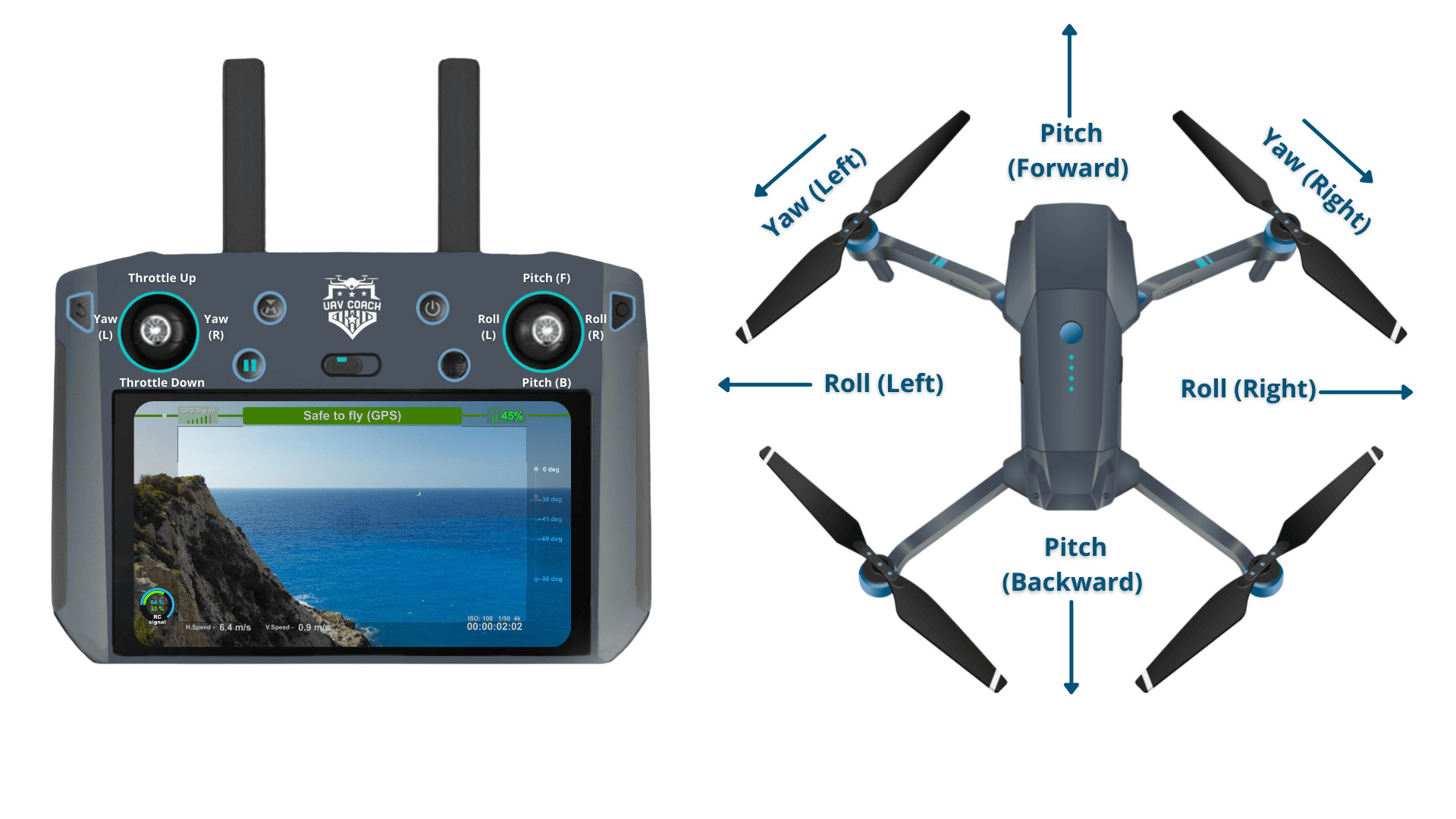 How to Fly Drone
How to Fly Drone
Orientation Matters: Intuitive vs. Inverted Controls
A key thing to understand when learning how to fly a drone is how the controls change depending on the drone’s orientation relative to you.
When your drone is facing away from you, with the camera pointing in the direction of flight, the controls will feel intuitive:
- Right stick right = drone moves right
- Right stick left = drone moves left
- Right stick forward = drone moves forward (away from you)
- Right stick backward = drone moves backward (towards you)
However, when the drone is facing towards you, with the camera pointing at you, the controls become inverted, especially for Roll and Pitch:
- Right stick right = drone moves left
- Right stick left = drone moves right
- Right stick forward = drone moves backward (towards you)
- Right stick backward = drone moves forward (away from you)
This inversion can be confusing for beginners. The best way to overcome this is to practice flying with the drone facing both directions and consciously thinking about the control inputs needed for each orientation. Many beginners find it easier to start by always keeping the drone facing away from them until they become more comfortable with the controls.
Practice Makes Perfect: Tips for New Drone Pilots
Learning to fly a drone takes practice and patience. Here are a few tips to help you along the way:
- Start in a wide-open space: Choose a large field or park, free from obstacles like trees, buildings, and power lines. This gives you plenty of room to practice without the risk of crashing.
- Gentle stick inputs are key: As mentioned earlier, start with very gentle movements on the sticks. Small inputs result in small, manageable drone movements.
- Focus on one control at a time: In your initial practice sessions, focus on mastering one control at a time. For example, spend some time just practicing throttle and altitude control, then move on to roll, then pitch, and finally yaw.
- Practice hovering: Before attempting complex maneuvers, practice simply hovering in one spot. This will help you develop a feel for the throttle and making fine adjustments.
- Gradually increase complexity: As you become more comfortable, start combining controls and practicing more complex maneuvers like gentle circles and figure eights.
Conclusion: Take to the Skies with Confidence
Learning how to fly a drone is a rewarding journey. While it might seem daunting at first, understanding the basic controls and dedicating time to practice will quickly build your confidence and skill. Remember to start slowly, be patient with yourself, and most importantly, enjoy the process of taking to the skies and experiencing the unique perspective that drone flight offers.
